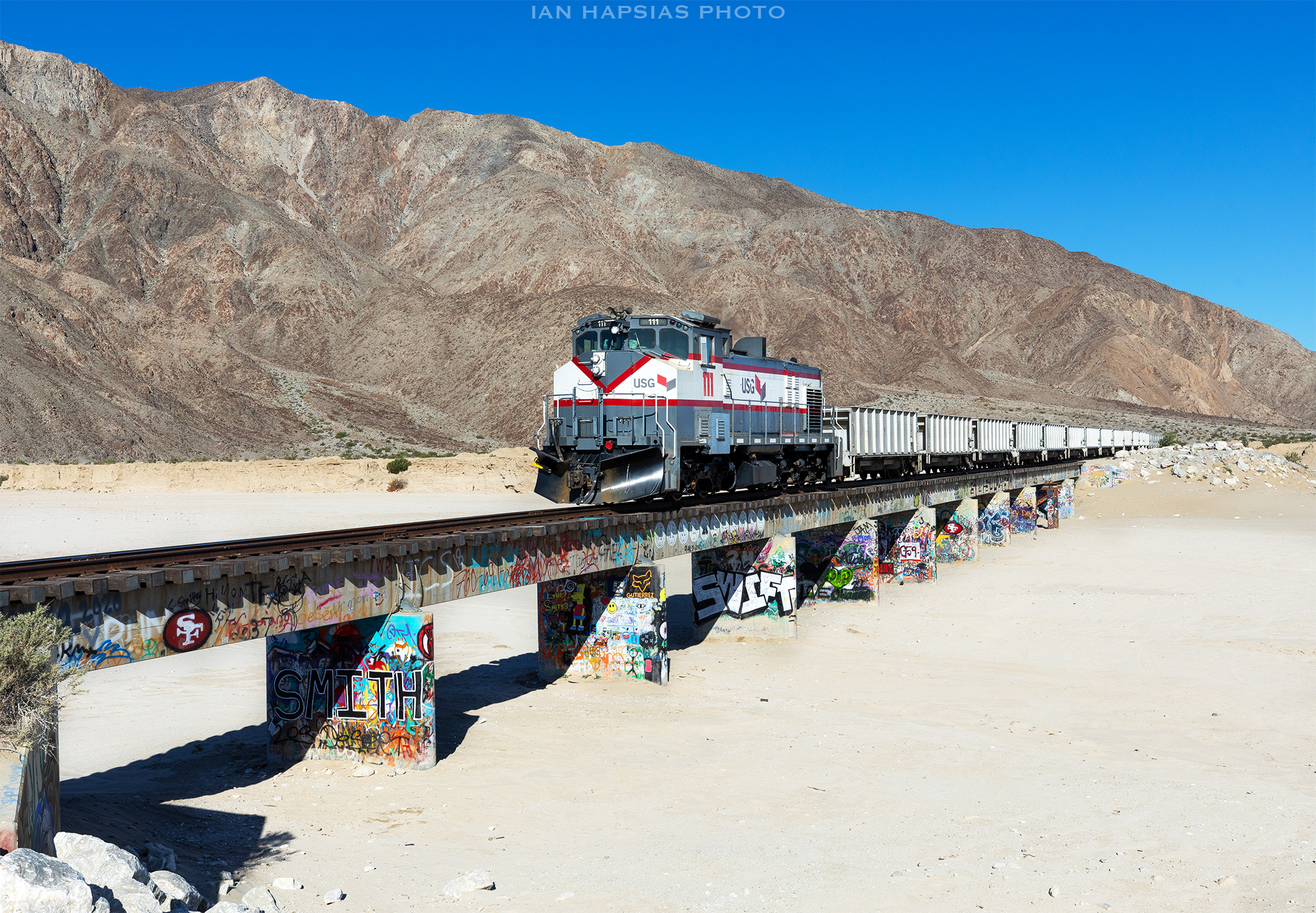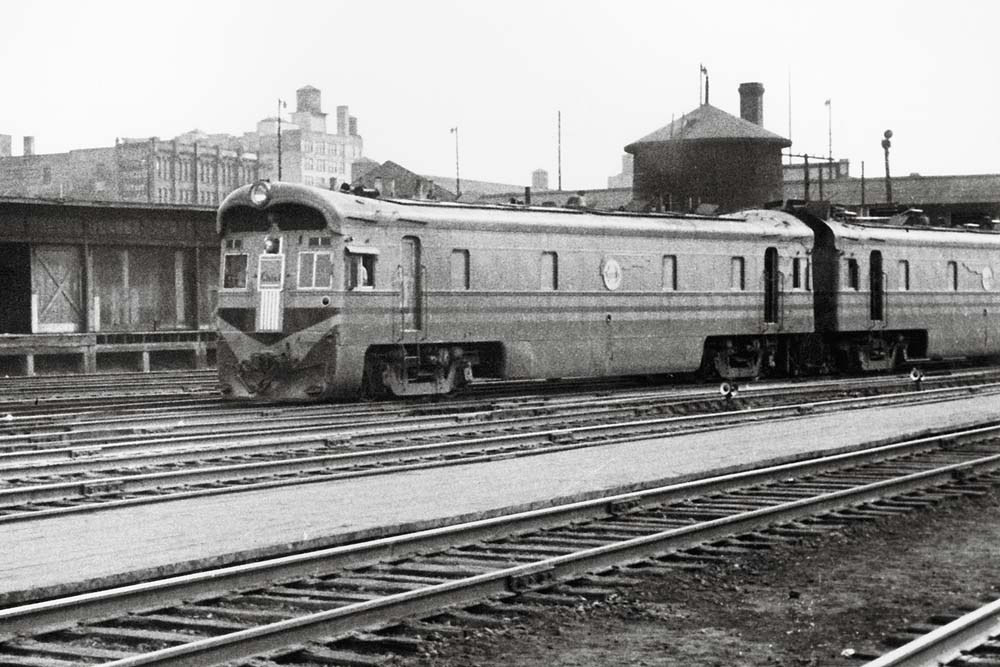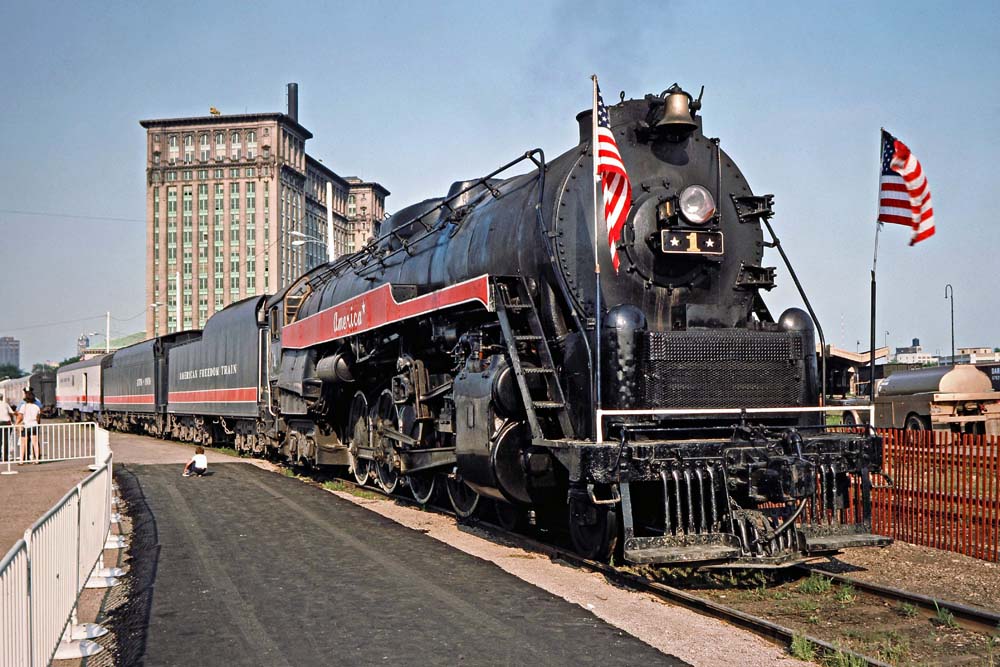Photographer Ian Hapsias

Pennsylvania photographer Ian Hapsias took an interest in United States Gypsum Corporation’s narrow-gauge railroad years before he would make the 2,300-mile trek to Plaster City to visit the 20-mile industrial railroad. In-between shooting old signals and Pittsburgh’s industrial scenes, Hapsias was mapping out his game plan to visit USG.
“I would spend closer to 6 to 10 hours combing over satellite images, other older images, history, the terrain, and what kind of vehicle would be necessary, before traveling there,” says Hapsias, who has shot all kinds of railroad scenes in the Keystone State, but never in the Mojave Desert.
“It was a 5 1/2 hour flight one way from Pittsburgh to San Diego, only to be followed up by nearly an hour and forty-minute drive to reach Plaster City off Interstate 8,” he says.
Plaster City is located in the Anza-Borrego Desert, about 5 miles from the border between the U.S. and Mexico.
Hapsias spent the night in El Centro, Calif., about 20 miles east of Plaster City, the closest town with hotel accommodations, where gas was $5.09 per gallon in April 2024, a bargain compared to $6.79 per gallon in nearby Ocotillo.
“The nearest gas station is in Ocotillo, Calif., about 17 miles west of Plaster City. We got all of our supplies, necessities, and fuel in El Centro before starting the day,” he says.
USG’s narrow-gauge freight operations operate on a relatively routine schedule, cutting down on some of the guesswork and idle time waiting for trains.
“If I recall correctly, the railroad started their mornings at 7 a.m. and the general consensus was for us to be at the plant in Plaster City first thing. The engine shop is right along the highway and after getting their paperwork, the crew would come out of the office and head for the quarry at Fish Creek,” he says.
After leaving Plaster City, the railroad requires four wheel drive and vehicles with high clearance, without exception, Hapsias says, noting the deep sand and ruts and the overall remoteness of the region. To make it more interesting, photographers need to be situationally aware and keep an eye out for signage.
“Some roads travel through an active bombing range right along the railroad,” he says.
A California Trail Map and online sources confirm the U.S. military conducts target practices on land parcels northwest of Plaster City along the narrow gauge right-of-way. Those zones are clearly posted with signage.
Hapsias didn’t get the vehicle stuck, nor did he have any close calls with government ordnance, but there is more to this adventure.
“On my last day there, I was waiting for the northwest run to commence and we ultimately lost the sunlight. On our way back down to our vehicle, all of the sudden we heard a warning from a Mojave Greens rattlesnake. We never would have seen the snake had it not warned us,” he says, blending in perfectly with the rocks.
As a venomous snake, Hapsias doubts he could have made it to a hospital — about an hour away.
“ … I wouldn’t have stood a fighting chance if it struck me,” he adds.
Despite frequent military bombings, venous rattlesnakes, and rugged mountain terrain, Hapsias has made two trips to the USG, capturing a lot of photos, and spending about four to five days total on the nation’s last industrial narrow gauge freight hauler.
Hapsias’s photos, including from his visits to USG, can be found here on Flickr.
Getting the shot is a series of Trains.com articles highlighting the travels of individuals who go above and beyond to capture great railroad images, like hiking several miles for the perfect overlook, or driving hours out of the way in search of something special.
Read the previous article, “Getting the shot: Kyle Yunker.”














Love your pictures, the desert can be challenging. When I visit family in Las Vegas, NV. I am always watchful for snakes etc., when I am photographing the UP in the area.
Good story and photo, yup those rattle snakes can be “interesting” growing up near Redlands me and my horse use to encounter them frequently, at least they rattle our copperheads here in SC just blend with the ground.